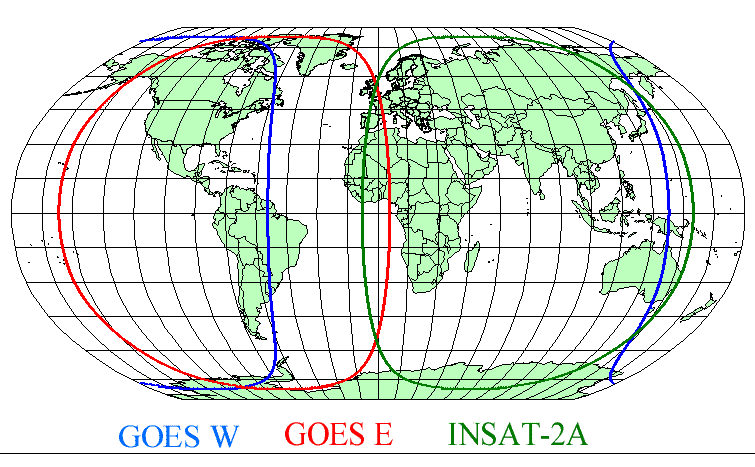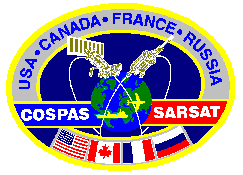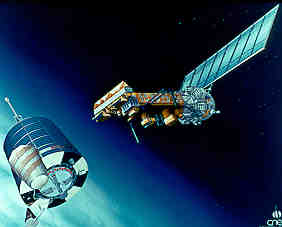
The Cospas-Sarsat satellite constellation is composed of search and rescue satellites in low earth orbit (LEOSAR) and geostationary orbit (GEOSAR).

The nominal system configuration is four satellites, two Cospas and two Sarsat.
Russia supplies two Cospas satellites placed in near-polar orbits at 1000 km altitude and equipped with SAR instrumentation at 121.5 MHz and 406 MHz.

The USA supplies two NOAA meteorological satellites placed in sun-synchronous, near-polar orbits at about 850 km altitude, and equipped with SAR instrumentation at 121.5 MHz and 406 MHz supplied by Canada and France.
Each satellite makes a complete orbit of the earth around the poles in about 100 minutes, travelling at a velocity of 7 km per second. The satellite views a "swath" of the earth of approximately 6000 km wide as it circles the globe, giving an instantaneous "field of view" about the size of a continent. When viewed from the earth, the satellite crosses the sky in about 15 minutes, depending on the maximum elevation angle of the particular pass.
The current GEOSAR constellation is composed of two satellites provided by the USA referred to as GOES East (GOES E) and GOES West (GOES W), and one satellite provided by India (INSAT-2A). These satellites provide the continuous earth coverage depicted below.
